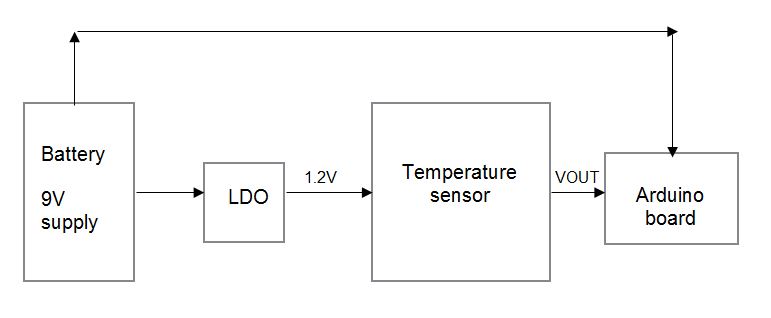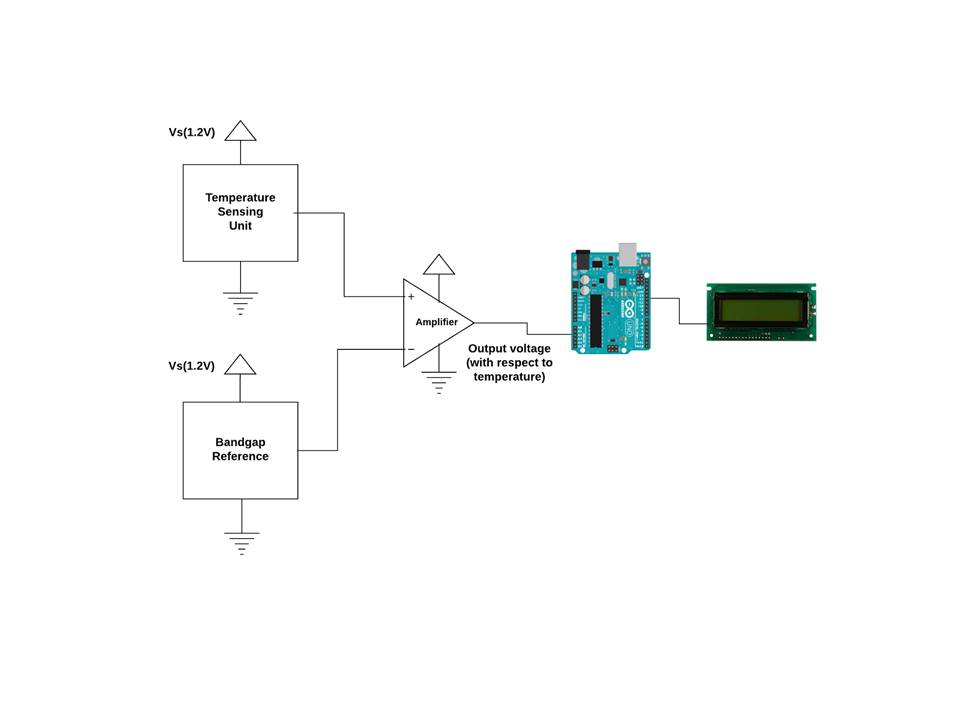SYSTEM DESIGN
System Overview:
Temperature sensor is a device used to detect a physical change in temperature, producing either a digital or analog output. It finds its applications in wide range of fields such as healthcare, home automation, biology research, industrial applications, materials research, and thermal characterization of electrical product. The proposed CMOS based temperature sensor is used to detect change in atmospheric temperature and gives an analog voltage output that is converted to temperature using an Arduino. We then display the temperature on LCD screen.

The goal of this project is to make a temperature-sensing unit with PTAT (Proportional To Absolute Temperature) circuit using BJT in diodes configuration. Also this project involves designing a voltage reference circuit for low power application. For our application this voltage or bandgap reference circuit is used to bias the internal amplifier. The temperature sensing unit, which is a PTAT circuit detects the temperature. The operating principle of the circuit utilizes the change in base-to-emitter voltage of BJT, which is a diode connected circuit as there is change in temperature. The output from PTAT circuit is amplified by the internal amplifier. After amplification, this voltage is converted to digital format by ADC present in ATmega328P of Arduino UNO which is then converted to the corresponding temperature. The result of the corresponding temperature in both Celsius and Fahrenheit scale is displayed on LCD screen, which is interfaced with the Arduino platform.
System Level Description:

Input signal:
The input to our design is temperature which is detected by PNP in diode configuration. Since its voltage across base-emitter junction is directly proportional to temperature, it shows a change in voltage as the temperature increases or decreases. So here the BJTs act as on-chip sensor to detect the change in temperature.
Gain of error amplifier:
The gain of opamp used to design error amplifier is kept very high so that it will maintain equal voltage level at its two input nodes.
Stability of the amplifier:
The stability is critical for the design as any noise shouldn’t disturb the operation of error amplifier and drive the circuit for saturation. For this the phase margin of opamp is maintained around 60º.
Resolution of ADC:
Since we are using Arduino Uno to display the temperature, it provides 10-bit resolution ADC which is suitable for our data conversion to display temperature in digital format. For single ended conversion, the result is ADC=Vin*1024/Vref where Vin is the input to arduino board from the chip and Vref is the reference voltage provided to the arduino.
